Home » Wind Turbine » Horizontal Axis vs. Vertical Axis
Horizontal Axis vs. Vertical Axis
Wind turbines are machines that generate electricity from the kinetic energy of the wind. In history, they were more frequently used as a mechanical device that turned machinery. Today, turbines can be used to generate large amounts of electrical energy in wind farms both onshore and offshore.
There are two kinds of wind turbine, namely the Horizontal Axis Wind Turbine (HAWT) and the Vertical Axis Wind Turbine (VAWT). Before acquiring a home wind turbine, we need to understand which type is more suitable to avoid additional financial losses.
Horizontal Axis Wind Turbines
The horizontal wind turbine is a turbine in which the axis of the rotor's rotation is parallel to the wind stream and the ground. Most HAWTs today are two- or three-bladed, though some may have fewer or more blades. There are two kinds of Horizontal Axis Wind Turbines: the upwind wind turbine and the downwind wind turbine.
The HAWT works when the wind passes over both surfaces of the airfoil shaped blade but passes more rapidly at the upper side of the blade, thus, creating a lower-pressure area above the airfoil. The difference in the pressures of the top and bottom surfaces results in an aerodynamic lift. The blades of the wind turbine are constrained to move in a plane with a hub at its center, thus, the lift force causes rotation about the hub. In addition to the lifting force, the drag force, which is perpendicular to the lift force, impedes rotor rotation.
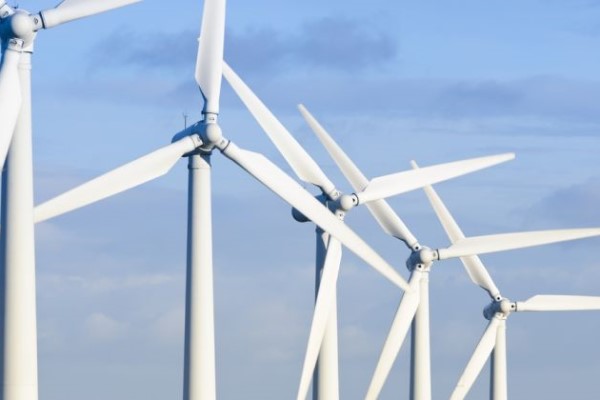
The advantages of the HAWT over the VAWT, according to the Norwegian University of Science and Technology, is:
The vertical axis wind turbine is an old technology, dating back to almost 4,000 years ago. Unlike the HAWT, the rotor of the VAWT rotates vertically around its axis instead of horizontally. Though it is not as efficient as a HAWT, it does offer benefits in low wind situations wherein HAWTs have a hard time operating. It tends to be easier and safer to build, and it can be mounted close to the ground and handle turbulence better than the HAWT. Because its maximum efficiency is only 30%, it is only usually just for private use.
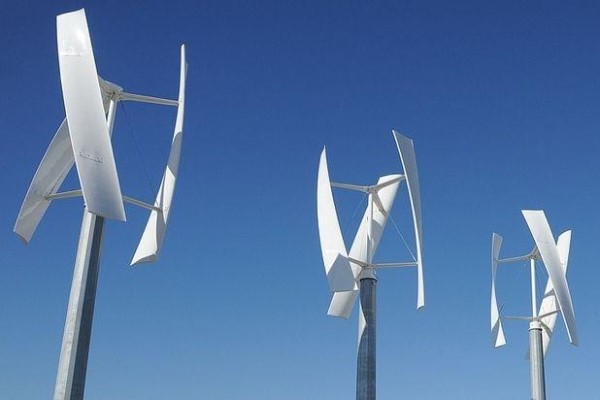
Just like the HAWT, the VAWT also comes with a handful of advantages over the HAWT, namely:
There are two kinds of wind turbine, namely the Horizontal Axis Wind Turbine (HAWT) and the Vertical Axis Wind Turbine (VAWT). Before acquiring a home wind turbine, we need to understand which type is more suitable to avoid additional financial losses.
Horizontal Axis Wind Turbines
The horizontal wind turbine is a turbine in which the axis of the rotor's rotation is parallel to the wind stream and the ground. Most HAWTs today are two- or three-bladed, though some may have fewer or more blades. There are two kinds of Horizontal Axis Wind Turbines: the upwind wind turbine and the downwind wind turbine.
The HAWT works when the wind passes over both surfaces of the airfoil shaped blade but passes more rapidly at the upper side of the blade, thus, creating a lower-pressure area above the airfoil. The difference in the pressures of the top and bottom surfaces results in an aerodynamic lift. The blades of the wind turbine are constrained to move in a plane with a hub at its center, thus, the lift force causes rotation about the hub. In addition to the lifting force, the drag force, which is perpendicular to the lift force, impedes rotor rotation.

The advantages of the HAWT over the VAWT, according to the Norwegian University of Science and Technology, is:
- blades are to the side of the turbine's center of gravity, helping stability;
- the turbine collects the maximum amount of wind energy by allowing the angle of attack to be remotely adjusted;
- the ability to pitch the rotor blades in a storm so that damage is minimized;
- the tall tower allows the access to stronger wind in sites with wind shear and placement on uneven land or in offshore locations;
- most HAWTs are self-starting;
- can be cheaper because of higher production volume.
- it has difficulties operating near the ground;
- the tall towers and long blades are hard to transport from one place to another and they need a special installation procedure;
- they can cause a navigation problem when placed offshore.
The vertical axis wind turbine is an old technology, dating back to almost 4,000 years ago. Unlike the HAWT, the rotor of the VAWT rotates vertically around its axis instead of horizontally. Though it is not as efficient as a HAWT, it does offer benefits in low wind situations wherein HAWTs have a hard time operating. It tends to be easier and safer to build, and it can be mounted close to the ground and handle turbulence better than the HAWT. Because its maximum efficiency is only 30%, it is only usually just for private use.

Just like the HAWT, the VAWT also comes with a handful of advantages over the HAWT, namely:
- since VAWT components are placed nearer to the ground, it has an easier access to maintenance;
- smaller cost of production, installation, and transport;
- turbine does not need to be pointed towards the wind in order to be effective;
- VAWTs are suitable in places like hilltops, ridgelines and passes;
- blades spin at a lower velocity, thus, lessening the chances of bird injury;
- suitable for areas with extreme weather conditions like mountains.
- most of them are only half as efficient as HAWTs due to the dragging force;
- air flow near the ground and other objects can create a turbulent flow, introducing issues of vibration;
- VAWTs may need guy wires to hold it up (guy wires are impractical and heavy in farm areas).
Post a Comment:
You may also like:

Featured Articles
Horizontal Axis Wind Turbine Design
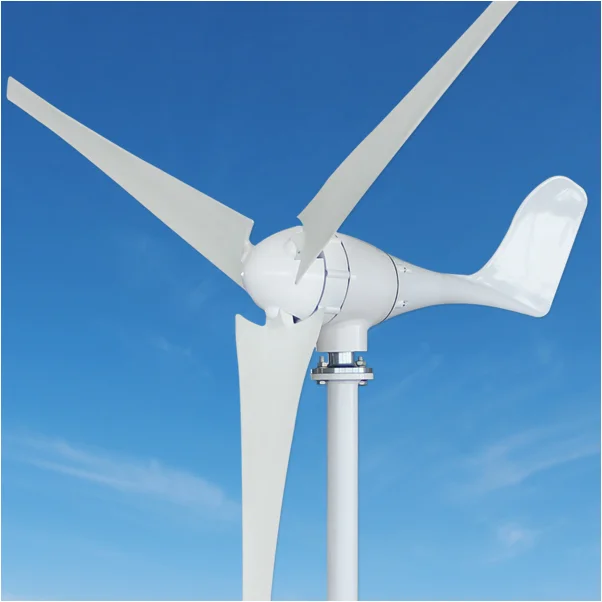 Today, the most common design of wind turbine is the horizontal axis wind turbine (HAWT). That is, the axis of rotation is ...
Today, the most common design of wind turbine is the horizontal axis wind turbine (HAWT). That is, the axis of rotation is ...
 Today, the most common design of wind turbine is the horizontal axis wind turbine (HAWT). That is, the axis of rotation is ...
Today, the most common design of wind turbine is the horizontal axis wind turbine (HAWT). That is, the axis of rotation is ...Overvoltage Protection for Wind ...
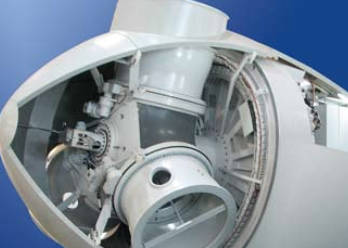 Due to their principle of operation, wind turbines have to be set up outdoors and are used in a wide range of ...
Due to their principle of operation, wind turbines have to be set up outdoors and are used in a wide range of ...
 Due to their principle of operation, wind turbines have to be set up outdoors and are used in a wide range of ...
Due to their principle of operation, wind turbines have to be set up outdoors and are used in a wide range of ...What is a Wind Turbine?
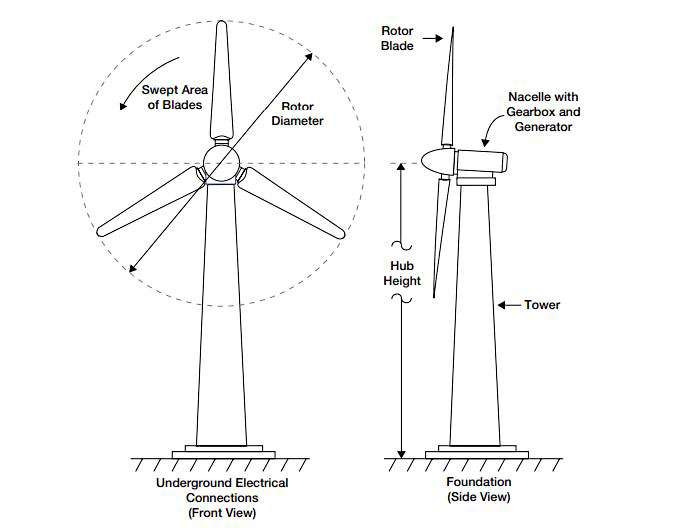 Wind turbines are devices that convert the kinetic energy from the wind into mechanical power, which can then be used to generate ...
Wind turbines are devices that convert the kinetic energy from the wind into mechanical power, which can then be used to generate ...
 Wind turbines are devices that convert the kinetic energy from the wind into mechanical power, which can then be used to generate ...
Wind turbines are devices that convert the kinetic energy from the wind into mechanical power, which can then be used to generate ...Household Wind Energy System Components
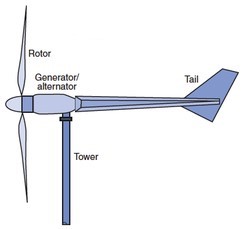 Basic parts of home wind energy systems generally comprise a rotor, a generator or alternator mounted on a frame, a tail ...
Basic parts of home wind energy systems generally comprise a rotor, a generator or alternator mounted on a frame, a tail ...
 Basic parts of home wind energy systems generally comprise a rotor, a generator or alternator mounted on a frame, a tail ...
Basic parts of home wind energy systems generally comprise a rotor, a generator or alternator mounted on a frame, a tail ...Wind Turbine Glossary
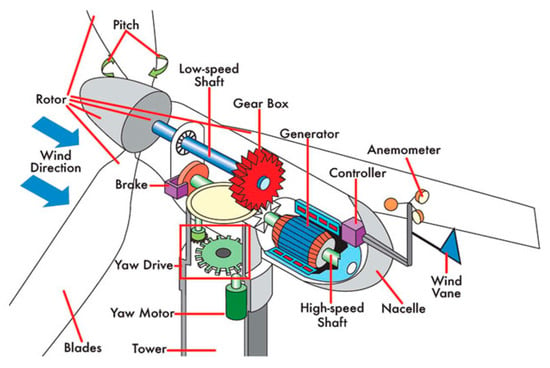 Wind energy is the kinetic energy that is present in moving air. The amount of potential energy depends mainly on wind speed, but ...
Wind energy is the kinetic energy that is present in moving air. The amount of potential energy depends mainly on wind speed, but ...
 Wind energy is the kinetic energy that is present in moving air. The amount of potential energy depends mainly on wind speed, but ...
Wind energy is the kinetic energy that is present in moving air. The amount of potential energy depends mainly on wind speed, but ...